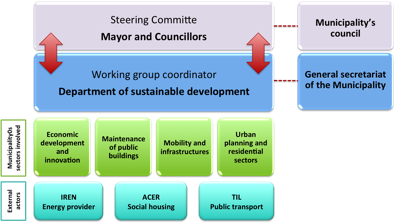A. Administrative structure
A1. Establishment of a Mitigation and Adaptation Plan office
The development of a Mitigation and Adaptation plan requires collaboration and coordination between various departments in the local administration, such as environmental protection, land use and spatial planning, economics and social affairs, buildings and infrastructure management, mobility and transport, budget and finance, procurement, etc. In addition, one of the challenges for success is that this process should not be conceived by the different departments of the local administration as an external issue, but that it has to be integrated in each department daily activities.
For this reason a strong coordinating structure is needed. A clear organisational structure and assignment of responsibilities in fact are prerequisites for the successful and sustainable implantation of MAP. The structure should involve key actors that are already involved in the administrative structure dealing day by day with all the sector included in the MAP: energy, buildings, urban planning, green areas, mobility, industrial and agricultural policies, water and waste management etc. Depending on the particular context it could be useful to involve also municipality’s companies working in these sectors (if any) as: local energy provider, water provider etc. As an example of simple organisation structure, two groups may be constituted:
a. A steering committee, constituted by politicians (e.g Energy councillors, urban planning councillor, mayors etc). Its mission would be to provide strategic direction and the necessary political support to the process.
b. One working group constituted by the energy planning manager and key persons from various departments of the local authority (other technicians, green areas experts, mobility managers etc.). Their task would be to undertake the actual MAP elaboration and follow up work, to ensure stakeholders’ participation, to organise monitoring, to produce reports, etc.
TIPS:
- Try to use organisational structures that have already been created for other related policies (energy management unit, local Agenda 21 coordination, etc.);
- Choose a MAP coordinator that have a wide network and support within the Municipality in order to have enough influence during the entire process on both other sectors and councillor;
- Choose a MAP coordinator that have demonstrated strong leadership and commitment to the issues related to climate change;
- Include in the staff one energy expert dedicated to data collection and CO2 calculations issues;
- Take into consideration the possibility to organize a specific training targeted to the MAP staff in order to homogenise the knowledge on technical issue;
- Develop of a flow chart, indicating the various interactions between departments and actors in order to identify the adjustments that may be necessary to the local authority’s organisation;
- Depending on your municipality’s size and staff availability, you may benefit from the assistance of external support. It is even possible to subcontract some specific tasks (e.g. data collection, calculation of co2 reduced by selected interventions, document updating etc.) or to use interns (Masters or PhD students).
LAKS TOOLS:

An example: Padova’s administrative structure:




